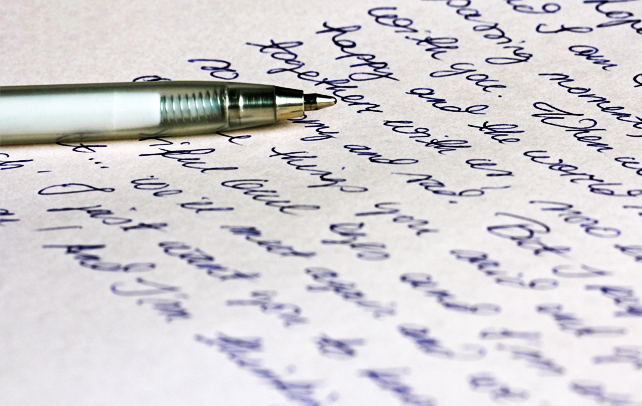How To Write A Personal Letter

The history of letter writing can be dated back to the history of human evolution. It is the reflection of man’s civilized culture and a mode through which people communicate with each other. But with the advent of technology, the basic art of letter writing has lost much of its essence. However, there are still many who prefer letters over other modes of communication. According to etiquette specialists, personal letters reflect the character and disposition of a person, as well as, the social and political condition in which those letters were written. Contrary to popular misconception, writing such letters can be quite challenging. Personal letters can be divided into two categories depending on the intended recipient: person-to-person letters and person-to-business letters. For example, a ‘cover letter’ is a business letter but when sent with a resume to a specific person, the same ‘cover letter’ becomes a personal letter. Examples of person-to-person letters include character reference letter, condolence letter, love letter, letter of apology and so on, while examples of person-to-business letters include job acceptance letter, general cover letter, etc.
Writing Personal Letters
- As a personal letter is a graphic counterpart of speech, avoid pompous and verbose language. It must be written in simple and clear language with colloquial expressions and in a purely conversational style. The letter must be lucid and pleasing to the reader.
- While writing a letter, instead of devoting entire time to yourself, also write about topics that are of common interest to you and the recipient.
- If you have a specific purpose in writing the letter, state the message clearly so that the recipient does not get confused with the details in the letter.
- If you are writing the letter to someone after a very long time, enclose your picture along to create a connection with the recipient.
Contents Of A Personal Letter
- The letter must have a heading which contains the full address of the writer along with the date on which it was written.
- The letter must begin with a salutation written on the left hand corner of the first page, little lower than the heading. The salutation depends on the degree of intimacy between the recipient and the sender. It can start with ‘dear’ or ‘my dear’ or ‘respected’ as these words articulate affection, intimacy and respect.
- The opening sentence of the letter must please the reader and should draw attention and interest towards the rest of the letter.
- The body of a personal letter must be split into paragraphs with each making a valid point. This break-up helps the reader better understand the write-up.
- Remind the recipient about the experiences you have shared together and mention something about that person which you admire. To make the letter more fascinating, you can include trivial information in an informal manner.
- Such letters must not end suddenly or else they appear rude. You can use different forms of courtesies and also subtly urge them to write you back before you wind up.
- You can end the letter with salutations like ‘sincerely yours’, ‘yours’ and ‘yours affectionately’. Though there are other more common usages like ‘cheers’ and ‘see you’ etc, ‘love’ is not generally used by one man while addressing another.
- Sending a letter without signature is absurd. So, before you dispatch it, make sure that it is duly signed below the subscription.
Answering A Letter
- While starting your reply to a personal letter, use the customary ‘dear’ along with the first name of the recipient. You can also use just the name of the person, without any other salutation, followed by a comma.
- The first sentence of the letter must be similar to a greeting which you make when you meet a person face to face as ‘How are you?’ and/or ‘I loved your letter.’
- After mentioning something which occurred in your life, you can start answering the questions asked about your life. It is fine to mention problems, but try to balance it with optimism and good news.
- Ensure that you ask the recipient some questions regarding his life to facilitate a response and end the letter with wishes.
Writing Specific Replies
- If the personal letter that you received mentioned some crisis that the writer is facing then you must write back an encouraging response. Start the letter by stating your support followed by a mention of past problems that the person overcame. You can write a few sentences about their hard work and the effort they put into it and wind up the message by telling them that you have faith in their mettle and that you are with them in these tough times.
- If you are writing a letter of condolence, make the recipient aware that you are thinking about them and that you too mourn their loss and are with them in their struggle.
Letter writing is an acquired art which stems from genuine desire to connect and reconnect with people. Writing a personal letter is different from other letters. It is informal in style, but contains thoughtful content and reflects one’s association with the person addressed. While writing a personal letter, consider your relationship and familiarity with the recipient. Also, depending on the nature of the addressee, informality of style and address can swing. The conventions of letter writing are also very strict in a personal letter. Just because it is informal in style, you cannot frame it in a relaxed way.












